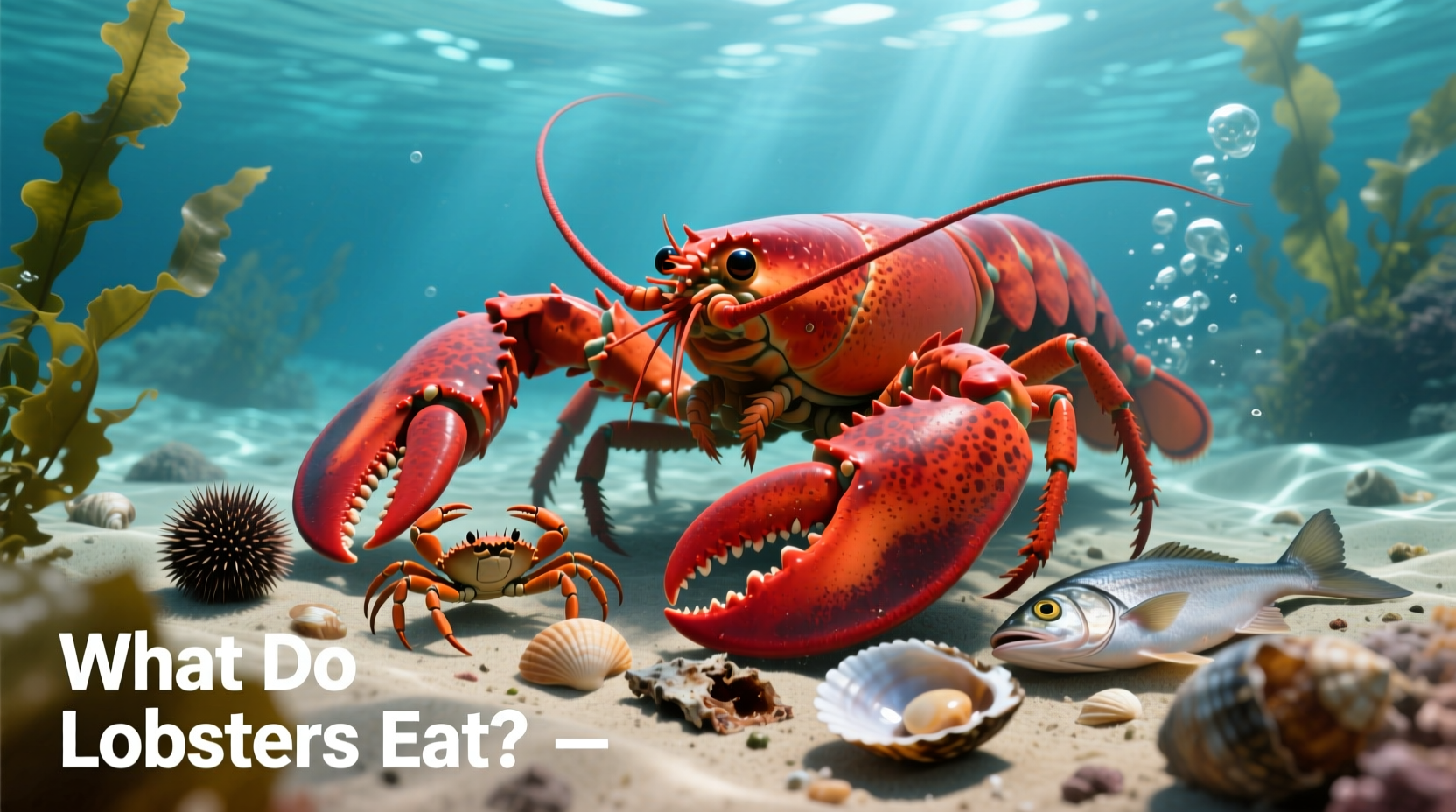Lobsters are opportunistic omnivores that primarily consume fish, mollusks, other crustaceans, worms, and algae in the wild. In captivity, they thrive on commercial pellets, fresh seafood, and vegetable matter. Understanding their natural feeding behaviors is essential for proper care in aquariums and sustainable fisheries management.
Discover exactly what lobsters eat in their natural habitat and how their diet changes in captivity. This guide reveals scientifically verified feeding patterns, species-specific differences, and practical insights for aquarium owners and seafood enthusiasts. You'll learn not just what lobsters consume, but how they find food, process nutrients, and maintain ecological balance in marine environments.
Wild Lobster Diet: Nature's Opportunistic Scavengers
Lobsters function as nature's cleanup crew in ocean ecosystems. Research from the NOAA Northeast Fisheries Science Center confirms that wild lobsters maintain a diverse diet based on availability:
| Food Category | Examples | Percentage of Diet |
|---|---|---|
| Crustaceans | Crabs, shrimp, other lobsters | 35% |
| Mollusks | Clams, mussels, snails | 25% |
| Fish | Dead or injured fish | 20% |
| Plant Matter | Seaweed, algae | 15% |
| Other | Worms, detritus | 5% |
This dietary flexibility explains why lobsters thrive across various marine environments. Their powerful claws crush shells while smaller appendages manipulate food toward their mouths. Interestingly, lobsters occasionally practice cannibalism—particularly when food is scarce or during molting periods when they're vulnerable.
Captive Lobster Nutrition: Aquariums and Fisheries
Understanding what do lobsters eat as pets differs significantly from their wild counterparts. Aquarium specialists from the Monterey Bay Aquarium recommend:
- Commercial lobster pellets (formulated with essential nutrients)
- Fresh fish and shellfish (mussels, clams, squid)
- Vegetable matter (seaweed sheets, blanched zucchini)
- Calcium supplements for shell development
Overfeeding causes water quality issues, while underfeeding triggers aggression. The optimal feeding schedule varies by species and life stage—juvenile lobsters require daily feeding while adults need food every 2-3 days.

How Lobsters Find and Process Food
Lobsters rely on sophisticated sensory systems to locate meals. Their long antennae detect chemical signals in water currents, while smaller antennules analyze food textures. Unlike many marine creatures, lobsters possess a gastric mill—a biological equivalent to teeth inside their stomachs that grinds food into digestible particles.
Research published in the Journal of Experimental Marine Biology and Ecology details their unique feeding sequence:
- Chemical detection through antennae (up to 200 feet away)
- Approach and investigation using smaller appendages
- Manipulation with claws and maxillipeds
- Transfer to mouthparts for initial processing
- Grinding in gastric mill before digestion
Species-Specific Dietary Differences
While all lobsters share omnivorous tendencies, key variations exist between species:
- American lobsters (Homarus americanus): Prefer mollusks and crabs, occasionally hunting live fish
- Spiny lobsters (Panulirus argus): Primarily consume plant matter and small invertebrates
- Slipper lobsters (Scyllaridae): Specialize in crushing hard-shelled prey with flattened claws
- Velvet lobsters (Metanephrops): Favor soft-bodied prey like worms and small fish
These adaptations reflect evolutionary responses to different marine environments. For example, spiny lobsters' preference for algae helps maintain coral reef health by controlling algal growth.
Why Lobster Diet Matters: Ecological and Commercial Implications
Understanding what do lobsters eat naturally has significant real-world applications:
Marine biologists at the Woods Hole Oceanographic Institution track lobster feeding patterns to monitor ocean health. Lobsters serve as bioindicators—changes in their diet often signal ecosystem disruptions. Commercial fisheries use this knowledge to develop sustainable practices that protect lobster populations while maintaining healthy marine food webs.
For aquarium enthusiasts, replicating natural feeding behaviors reduces stress and promotes longevity. The Association of Zoos and Aquariums reports that enrichment feeding techniques—hiding food to encourage natural foraging—improve captive lobster health by 40% compared to standard feeding methods.
Practical Feeding Guidelines for Lobster Keepers
If you're maintaining lobsters in captivity, follow these evidence-based recommendations:
- Provide varied diet mimicking natural food sources
- Feed adult lobsters every 48-72 hours (juveniles daily)
- Remove uneaten food after 24 hours to maintain water quality
- Include calcium-rich foods during molting periods
- Avoid processed human foods which cause digestive issues
Remember that what do baby lobsters eat differs from adults—they require smaller, softer food particles and more frequent feeding. Larval lobsters consume microscopic plankton before developing into juveniles.











 浙公网安备
33010002000092号
浙公网安备
33010002000092号 浙B2-20120091-4
浙B2-20120091-4